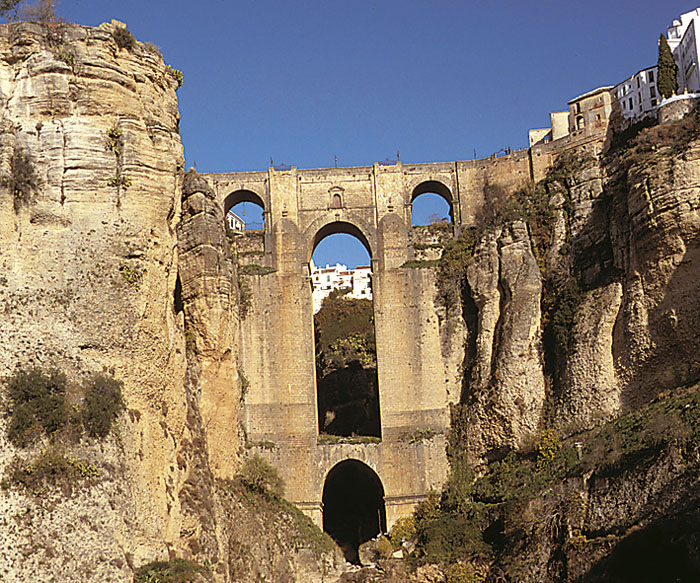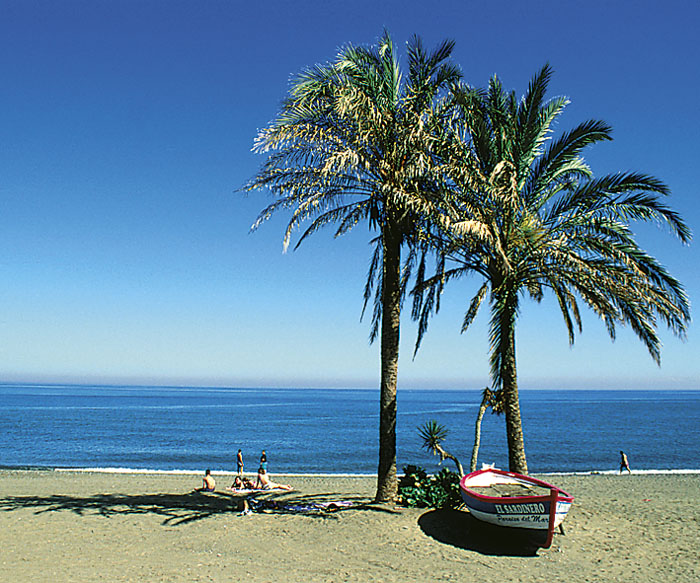
 A golf getaway to the classic cities of Andalusia can be a rewarding experience that combines rounds on some of Spain’s finest courses with fascinating history, extraordinary architecture, ancient culture and glorious gastronomy.
A golf getaway to the classic cities of Andalusia can be a rewarding experience that combines rounds on some of Spain’s finest courses with fascinating history, extraordinary architecture, ancient culture and glorious gastronomy.
Spain’s southernmost region, and its second largest, has been central to the country’s fortunes for many centuries, and its great cities such as Granada, Seville, Cadiz, Malaga and Cordoba continue to embody its very essence. There are also excellent golf courses in all the provinces, allowing golfers to enjoy both a few days on the greens and to immerse themselves in the heart and soul of the cities, where they can experience the Andalusian way of life.
Seville, capital of Andalusia and its most populous city, is known for its tapas bars, as are all cities in the region. The best thing to do is to follow the example of the Andalusians and go for tapas in the bars to taste tasty snacks accompanied by a drink and pleasant conversation with friends.
Seville is also the cultural heart of Andalusia, with spring staging its most important events of the year: Holy Week and the April Fair. Among Seville’s most architecturally outstanding monuments are its Cathedral, the Giralda and the Alcazar.
Seville has five golf courses, including the Real Club de Golf de Sevilla, designed by José María Olazábal and home to the 2004 World Cup, the 2009 Andalusia Open and the 2008, 2010 and 2012 Spanish Open.
 Granada, in the foothills of the Sierra Nevada mountains, is dominated by its magnificent Alhambra, an Arab palace and fortress with beautiful gardens. You can also enjoy in this city a rich historical heritage and a wide variety of tapas. For golfers, there are two courses: Granada Club de Golf, south of the city, and Santa Clara Golf, ten minutes from the city.
Granada, in the foothills of the Sierra Nevada mountains, is dominated by its magnificent Alhambra, an Arab palace and fortress with beautiful gardens. You can also enjoy in this city a rich historical heritage and a wide variety of tapas. For golfers, there are two courses: Granada Club de Golf, south of the city, and Santa Clara Golf, ten minutes from the city.
Malaga capital is the gateway to the Costa del Sol and has golf courses nearby, including the Parador de Malaga Golf, the oldest golf course on the Costa del Sol (1925), designed by Tom Simpson, who also designed Turnberry and Muirfield. The Costa del Sol, which includes the province of Malaga and the Mediterranean part of the Cadiz coast, has more than 70 golf courses.
Many golfers as soon as they arrive at Malaga airport pick up a rental car and head west along the coast towards Marbella. But in doing so they miss a wonderful city, Malaga, with great bustle, interesting history and excellent cuisine. Picasso was born in Malaga, many of his works of art are in the Picasso Museum and his life is documented in the nearby house where he came into the world, now a small museum.
Malaga has become a cultural hotspot in recent years thanks to its numerous museums, including, apart from the Picasso, the Thyssen and two others that opened this spring. Next to the central marina, the Pompidou Malaga Center has opened in a spectacular glass cube building, with artworks from the Pompidou in Paris, while the Russian Museum in Malaga is an extension of the famous Russian Museum in St. Petersburg. Housed in a former tobacco factory, it features Russian works of art dating back 600 years. The building also houses the vintage car collection of the Malaga Automobile Museum. The Museum of Fine Arts will open next year in the city.
Other buildings of interest in the capital of Malaga are the Moorish fortress of the Alcazaba and the adjacent Gibralfaro Castle, the Roman amphitheater and the cathedral of Malaga.
Cordoba has two golf courses. The Cordoba Country Club is located in a beautiful grove fifteen minutes north of the city. The Muslims ruled Spain from Cordoba, which centuries earlier had been an important Roman city. This fascinating city is a delight for the visitor, who can enjoy visiting for example the Jewish quarter, the Mosque Cathedral and the Alcazar. In spring, the Feria de Córdoba, the May Crosses and the Fiesta de los Patios, recently recognized by UNESCO as Intangible Cultural Heritage of Humanity, are celebrated. The city has one of the nine Michelin-starred restaurants in Andalusia.
 Cadiz has had a chequered history, having been founded by the Phoenicians and then ruled by Carthaginians, Romans and Muslims, and destroyed by the Visigoths before becoming the base for expeditions of discovery to the New World. The port city is practically surrounded by the sea and has more than 100 watchtowers, a Roman amphitheater and a cathedral with a golden dome.
Cadiz has had a chequered history, having been founded by the Phoenicians and then ruled by Carthaginians, Romans and Muslims, and destroyed by the Visigoths before becoming the base for expeditions of discovery to the New World. The port city is practically surrounded by the sea and has more than 100 watchtowers, a Roman amphitheater and a cathedral with a golden dome.
The surrounding area of Cadiz is famous for its white mountain villages, while Jerez de la Frontera is synonymous with sherry and flamenco – also found in cities throughout the region – and also famous for the dancing horses of the Royal Andalusian School of Equestrian Art. Highlights include the Jerez Horse Fair and the Jerez Festival.
In the province of Cadiz there are numerous golf courses. In and around Jerez are Sherry Golf Jerez and Montecastillo, home to several Volvo Masters, and the recently reopened Arcos Gardens, while along the coast near Cadiz are Costa Ballena, La Estancia, Sancti Petri Hills Golf and Novo Sancti Petri, where two of the three 18-hole courses were designed by Seve Ballesteros. In the Cadiz area belonging to the Costa del Sol there are renowned courses, including Valderrama, Real Club de Sotogrande, La Reserva and San Roque Club.















Leave a Reply